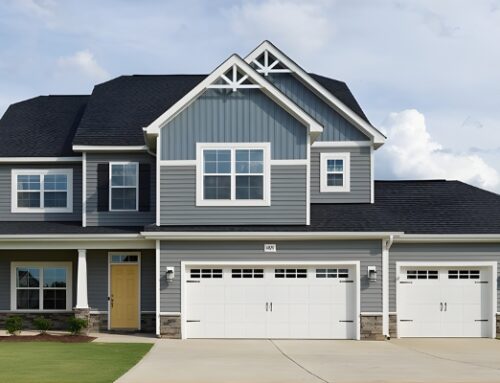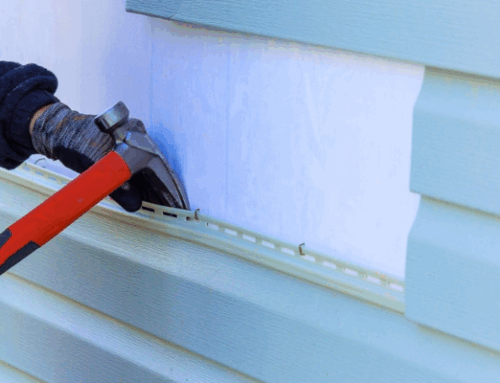Your home’s siding plays a crucial role in protecting it from the elements while enhancing its curb appeal. Over time, however, siding can deteriorate due to exposure to weather, pests, and other factors, leading to potential damage. Identifying signs of siding issues early can help prevent further damage and preserve the integrity of your home.
In this informative guide, we’ll explore common signs that indicate your home may need siding repair. From visible damage like cracks and holes to less obvious issues such as moisture infiltration and warping, we’ll discuss what to look for and why addressing these issues promptly is essential. Whether you’re a homeowner looking to maintain your property or simply curious about siding maintenance, this guide will equip you with the knowledge to identify and address siding issues effectively.
1. Cracks and Holes
- Visible Damage: Look for cracks, holes, or chips in the siding, which can allow moisture to penetrate and cause further damage.
- Potential Causes: Cracks and holes may result from impact damage, weathering, or pest infestation.
- Repair Options: Depending on the severity of the damage, repairs may involve patching small holes or replacing sections of siding.
2. Bubbling or Blistering
- Appearance: Notice any areas where the siding appears to bubble or blister, indicating trapped moisture beneath the surface.
- Causes: Bubbling or blistering can result from moisture infiltration, improper installation, or underlying structural issues.
- Repair Considerations: Addressing the underlying cause of moisture infiltration is crucial to prevent further damage. Repair may involve removing affected sections and addressing any underlying issues before replacing the siding.
3. Faded or Discolored Areas
- Loss of Color: Watch for areas of the siding that have faded or changed color over time, indicating sun damage or weathering.
- UV Exposure: Fading and discoloration are often the result of prolonged exposure to UV rays from the sun.
- Maintenance Solutions: While faded siding may not necessarily require repair, regular cleaning, and maintenance can help restore its appearance and prolong its lifespan.
4. Warping or Buckling
- Distorted Appearance: Check for areas where the siding appears warped, buckled, or uneven, indicating underlying issues.
- Moisture Damage: Warping and buckling are often caused by moisture infiltration, which can compromise the integrity of the siding and underlying structure.
- Professional Assessment: Consult with a professional contractor to assess the extent of the damage and determine the appropriate repair or replacement options.
5. Peeling or Flaking Paint
- Visible Signs: Notice any areas where the paint on the siding is peeling, cracking, or flaking off, exposing the underlying material.
- Water Damage: Peeling paint is often a sign of moisture infiltration, which can lead to further damage if not addressed promptly.
- Surface Preparation: Proper surface preparation is essential before repainting damaged areas to ensure adhesion and long-lasting results.
6. Mold or Mildew Growth
- Visible Growth: Look for signs of mold or mildew growth on the surface of the siding, especially in areas prone to moisture buildup.
- Health Concerns: Mold and mildew can pose health risks and indicate underlying moisture issues that need to be addressed.
- Cleaning and Treatment: Remove mold and mildew promptly using appropriate cleaners and treatments, and address any underlying moisture sources to prevent regrowth.
7. Loose or Missing Siding Panels
- Visible Damage: Check for any siding panels that appear loose, detached, or missing altogether.
- Wind Damage: Loose or missing siding panels are often the result of strong winds or improper installation.
- Repair or Replacement: Secure loose panels and replace missing ones to maintain the integrity and appearance of the siding.
8. Increased Energy Bills
- Poor Insulation: If you notice a sudden increase in energy bills, it could be a sign that your siding is no longer providing adequate insulation.
- Heat Loss: Damaged or deteriorating siding can allow heat to escape from your home during the winter months, leading to higher energy consumption.
- Insulation Upgrades: Consider upgrading your siding or adding additional insulation to improve energy efficiency and reduce heating and cooling costs.
9. Visible Signs of Insect Infestation
- Visible Damage: Look for signs of insect activity, such as holes, tunnels, or nests in the siding.
- Wood-Destroying Insects: Certain insects, such as termites and carpenter ants, can cause extensive damage to wood siding.
- Pest Control Measures: Address any insect infestations promptly by contacting a pest control professional and repairing or replacing damaged siding.
10. Sagging or Uneven Siding
- Structural Issues: Notice any areas where the siding appears to sag or droop, indicating potential structural issues.
- Water Damage: Sagging or uneven siding may be a sign of water damage or underlying structural issues that need to be addressed.
- Professional Inspection: Consult with a qualified contractor to assess the cause of sagging siding and determine the appropriate course of action.
Conclusion
Maintaining the integrity of your home’s siding is essential for protecting your property from the elements and preserving its curb appeal. By recognizing the signs of siding damage early on and addressing them promptly, homeowners can prevent further deterioration and costly repairs down the line.
From cracks and holes to bubbling paint and insect infestations, each sign of siding damage requires attention and appropriate action. Whether it’s patching small holes, addressing moisture infiltration, or replacing damaged panels, proactive maintenance and repair efforts can extend the lifespan of your siding and enhance the overall value of your home.
By staying vigilant, scheduling regular inspections, and addressing issues as they arise, homeowners can ensure that their siding remains in optimal condition for years to come. With proper care and maintenance, your home’s siding will continue to provide reliable protection and aesthetic appeal for your property.






